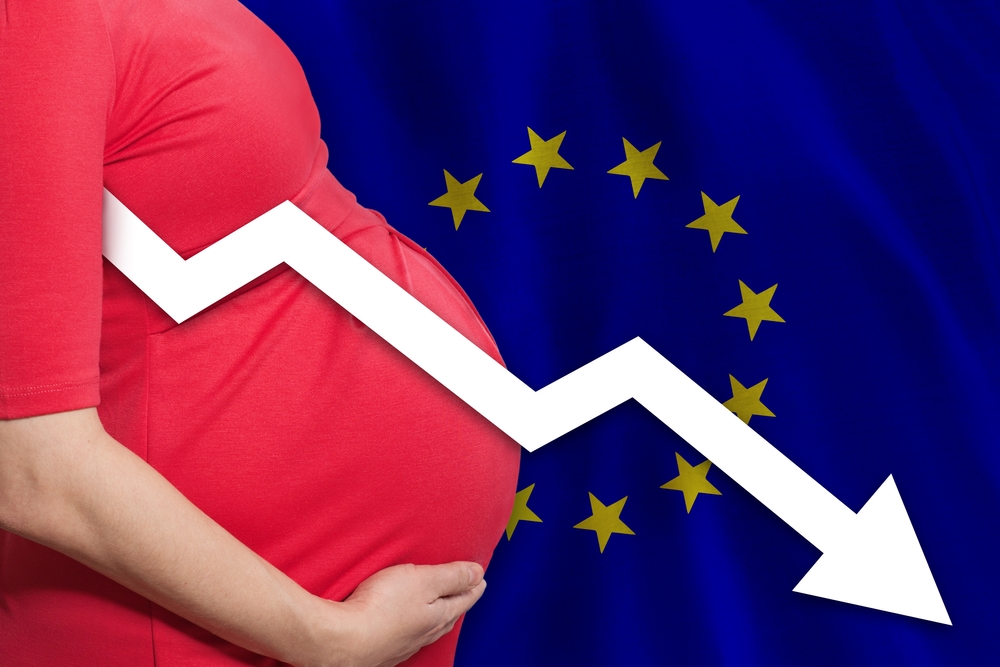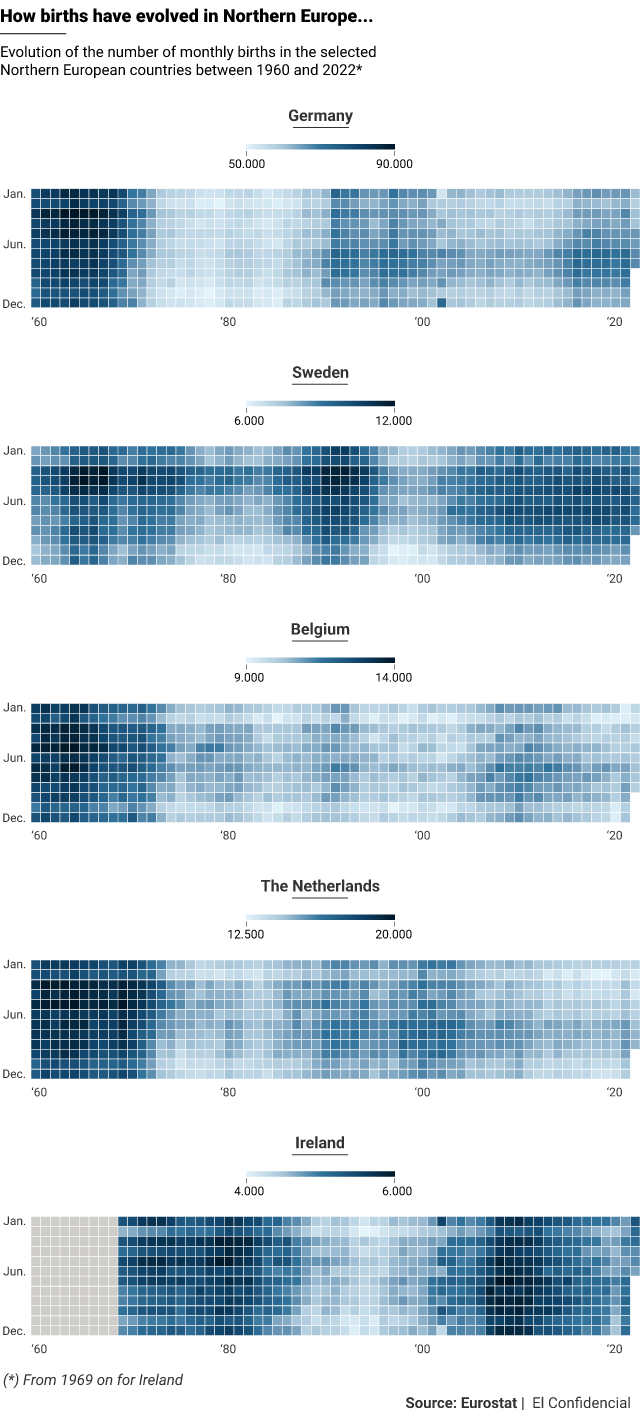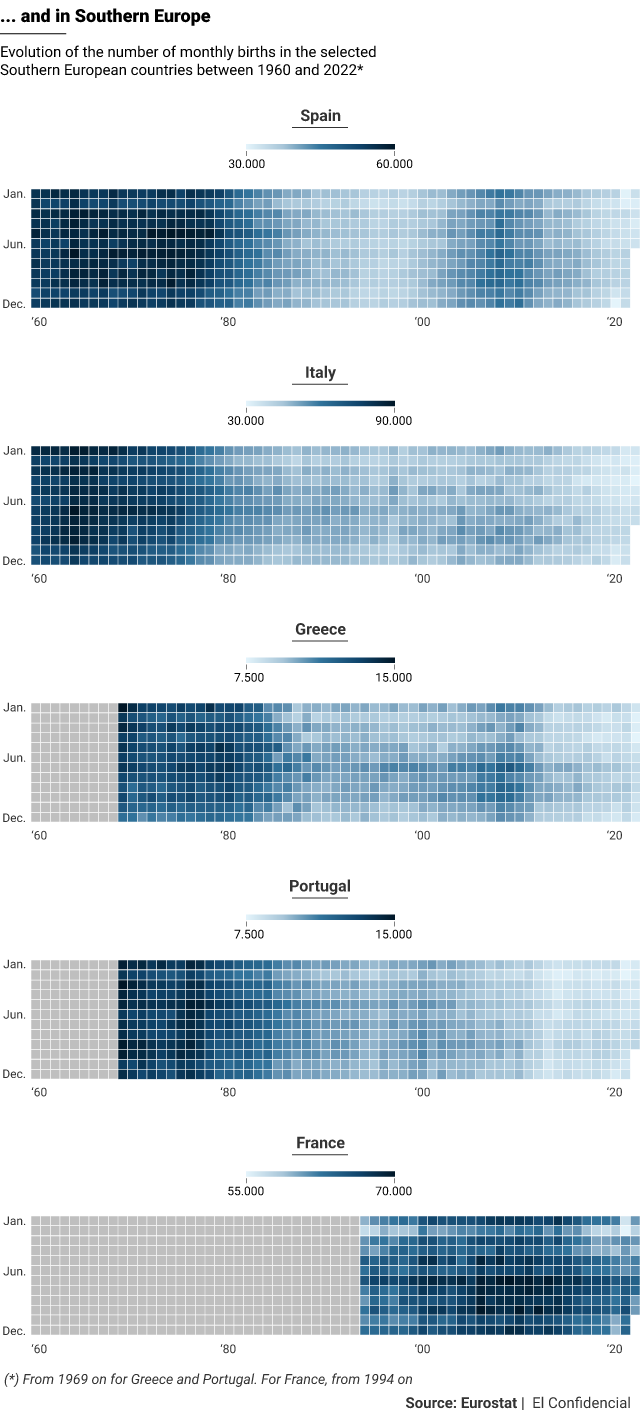Birth rates are falling even in Nordic countries: stability is no longer enough
Fertility declines across the European Union, with the South lagging behind. Birth rates in northern countries also show signs of decline as the causes become more structural and unrelated to wealth and stability. What's going on? A data-story.

© Artmim/Shutterstock
In Niger, each woman has about seven children. In South Korea, the country with the lowest fertility rate in the world, the average is less than one child per woman. The huge gap between the two countries is just one of the many data related to birth rates and it might prompt many questions about the future of world demography: will population growth stabilise? Will it grow? Will future generations have more children than now? Will our species survive?
There is no scientific consensus on many of these questions, as confirmed by Tomáš Sobotka, Deputy Director of the Vienna Institute for Demography, in a publication about the subject; according to him, many of them have not even been sufficiently studied yet. In particular, he stresses the importance of adopting an approach that studies the issue over time and among different countries.
What is indisputable is what is already happening: the birth rate in the European Union is falling, Spain being the country with the second lowest fertility rate, behind only Malta.
“Europe experienced a baby boom in the 1950s in all the countries affected by the Second World War,” explains Diego Ramiro, a researcher at the Demographic Dynamics group of the Spanish National Research Council (CSIC). The effect came later to Spain, which in the 1960s and 1970s was among the countries with the highest fertility rates.
But Spanish families went from having almost 3 children per woman in 1970 to 1.13 in 1998. The 2000s, on the other hand, began with an optimistic economic situation that increased births in Spain and in most EU countries. But the 2008 financial crisis caused a “sharp drop in fertility“, in Ramiro’s words, which has lasted until the present day.

The graphs show different patterns in the change of births per month since 1960 in some EU countries. A darker colour indicates that more babies were born during that period of time. Thus, it can be seen how countries such as Ireland actually experienced a ‘rebound effect’ from 2000 onwards, and how the economic crisis marked the end of this trend. Other countries show different patterns, although, generally, none of them have returned to the figures of the 1960s.
With figures even higher than the Nordic countries, France stands out as the EU country with the highest fertility rate. The change in birth rates also shows a more stable pattern than elsewhere. “In France there has always been very strong support for fertility, it is almost like a national interest,” says Ramiro.

The tradition of what is considered the natalist country par excellence dates back to the 19th century, when “the decadent cliché linked to demographic decline” was already emerging from the political sphere, writes CSIC demographer Julio Pérez Díaz in an article devoted exclusively to the French case. The message also took hold during the wars, when the country pushed marriage and procreation as a national duty.
The European map of fertility decline shows the biggest surprise of recent years for demographers: falling fertility rates in the Nordic countries. “These sharp declines have been unexpected, because these countries have always been seen as pioneers in work-life balance policies,” Sobotka notes in the article. “This is unheard of for them,” says Ramiro. If we look at the Eurostat figures for the last decade, fertility has fallen by 2% in Denmark, 12% in Sweden, 18% in Norway and up to 20% in Finland.
Some authors believe that if this decline is linked to the fact that it is increasingly common to delay family formation, it may become entrenched in future generations.
Although no Spanish province is spared from having among the lowest fertility figures on the continent, Almeria and Murcia have slightly higher numbers. Some areas of Spain surpassed the treshold of less than one child per woman. This is the case in the Canary Islands, Zamora, Ourense, Lugo, León, Asturias and Ibiza. Spain also stands out as the country with the highest figures when it comes to the average age of childbearing. Specifically, Galicia, the Basque Country and Madrid are the regions where mothers have children older.
More uncertainty, fewer children
In order for families to decide to have children, “the important thing is the living and upbringing conditions, the rest are short-term measures or patches”, says Marta Seiz, doctor in Political and Social Sciences, specialised in demography. She believes that one-off aids such as ‘baby payments’ to promote the birth rate do not foster birth rates in the long term. “Access to early childhood education from 0 to 3 years of age is very important, as it makes it easier to reconcile work and family life,” Seiz adds.
The above graph, a study in which Ramiro participated, with data collected by the Andalusian Institute of Statistics for several years after the economic crisis, sheds light on which factors are more important when it comes to becoming a mother. Although a relationship has been observed between level of ecucation and fertility (the higher the level of education, the more children), the researchers conclude that job stability is much more decisive. “For those who are unemployed, fertility rates plummet, both for women that have a university degree and those who don’t. And for those who have a permanent job, during the economic crisis not only did fertility not fall, but it stayed on the same level and even slightly increased”.
In France, greater economic stability and easier access to the labour market mean that young people are able to move out earlier. Access to housing and co-parenting are also more established.
In Spain, on the other hand, the working conditions of the young population and a greater sense of uncertainty continue to act as a brake on the birth rate. In fact, many researches confirm how – beyond the impact of economic crises – working conditions, access to housing, economic independence and the general increase in uncertainty among younger generations can affect fertility levels.
The delay in having children means that a wide gap in the number of children a woman wants to have and the number of children she can have is becoming increasingly common. Late motherhood “makes having a second child more difficult”, warns Seiz.
The mirage of immigration
Another factor which is taken into account when studying birth rates is the influence of migration flows. Faced with the scenario of a declining birth rate in Spain, the immigrant population has often been seen as a lifeline for fertility. But “immigrants adapt quickly to the fertility rates of the host country”, warns Ramiro.
“From 2000 to 2008 we had an influx of five million immigrants into Spain, but their fertility level is not very different from that of Spanish women, although it is somewhat higher,” Ramiro reflects. He also points to another international trend: “Fertility rates are decreasing quite sharply in most of the countries of origin as well”. Eventually, the upturns associated with immigration does not have an effect on the long term, Marta Seiz confirms, because immigrants end up “assimilating into the reproductive patterns” of the country they arrive in.
Will we see an increase in the birth rate in Spain again? The generations born in the 1990s, when fertility was in the doldrums, are now the ones having children. Therefore, there are fewer couples in reproductive age and fertility rates remain low. “This will continue to happen until we reach again the upturn of the 2000s,” explains the CSIC researcher, who furthermore warns that fertility rates still didn’t rise so much during the years of the upturn.
And in the end, it all depends on the desire of the Spanish to have children, in a context where job security and lifestyle preferences are becoming increasingly important in the decision to start a family.
The Covid crisis has also added a new layer of uncertainty for families and those who study population trends. In Spain, nine months after the confinement, births plummeted, according to figures from the National Institute of Statistics.
It is still too early to tell how long the effect of the pandemic will last and the challenge of guessing what the birth trends will be is becoming increasingly complex. Some authors paint a scenario in which Generation Z will bring about a system that makes societies more family and child friendly. For Sobotka, whatever happens, research on fertility and its changes will continue to be “relevant and surprising” in the coming decades.
Original source: https://www.elconfidencial.com/mundo/europa/2023-08-25/paises-nordicos-esquemas-natalidad-estabilidad_3723211/
